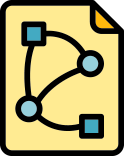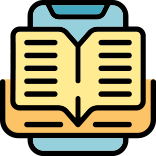
Reebop Breeding: Modeling Inheritance and Phenotype Digitally
What determines a living creature's physical traits?
(Topics in biology that address this essential question include: meiosis, heredity, protein folding/structure, central dogma, genetics, gene regulation, genomics, resource availability.)
Grade Level
7th-12th
Subjects
Biology
Duration
80-90 Minutes
Mode
Asynchronous Online
Face-to-Face
Hybrid
Synchronous Online
How are you integrating UDL (multiple means of engagement, representation, and action & expression) into your lesson?
Universal design for learning is addressed here in several important ways:
- Information is represented with chromosome models, marshmallow models, in words in the assignment details, and in both the individual Reebops and in the class set. Recording a walk-through video where you show remote learners how to approach the task can provide additional representations of information.
- Students can engage individually or with a partner. In-person learners can choose to use the computer simulation (as presented here) or a hands-on version of the meiosis/chromosome model and marshmallow dragon — although they must make the digital version at the end. In the second part of this lesson, students use the gallery of Reebops made by their peers.
- Students can explain their final paragraph using many different modalities that teachers are able to access and assess.
What evidence do you have that you are connecting teaching to the CRP tenets (academic success, cultural competence and critical consciousness)?
Culturally responsive and sustaining pedagogy connects to this lesson as well:
- Academic success: The simulation is information-rich, and there is an appropriately scaffolded procedure to guide students in developing a thorough explanation.
- Cultural competence: Students take on the role of scientists — and see their strengths of observation as crucial to what scientists do.
- Critical consciousness: The opening of this lesson briefly centers Indigenous cultures and their contributions to domestication of crops are celebrated, as is the diversity of the Reebops themselves. When students experience this first, incomplete story of how genetic similarity can lead to a broad diversity of phenotypes, they’re primed for learning about how life’s common ancestry connects all of us. They’re also prepared for learning about the misconceptions regarding human genetics and race that have contributed to bias and oppression.
How are you using technology to enhance and enrich the lesson?
Technology considerations: Although this lesson can be taught without the technology presented here, there are some advantages even for in-person learners:
- Using the Google Slides templates allows students to get a permanent, asynchronously-available gallery of ALL Reebops (and, if more than one section of a course completes this assignment, you can choose to have students work with that much larger data set).
- The working space, created in Google Slides, allows students to organize their work with the chromosome models durably.
- Students use a digital template to create standardized diagrams of the resulting Reebops, making analysis more straightforward for students than if they were to draw the results from scratch or take a picture of a dragon crafted from actual marshmallows and other supplies.
Trajectory

Acknowledged
Engages in discussions and activities around representative diversity and individual differences without grappling with structural oppressions. Culture is externalized and the focus is on the abstract. Minor discomfort may be felt and tensions are largely avoided.
Throughlines
Standards

Social Justice
Identity 3 - Students will recognize that people’s multiple identities interact and create unique and complex individuals.
Diversity 10 - Students will examine diversity in social, cultural, political and historical contexts rather than in ways that are superficial or oversimplified.

ISTE NETS
Empowered Learner 1b - Students build networks and customize their learning environments in ways that support the learning process.
Knowledge Constructor 3c - Students curate information from digital resources using a variety of tools and methods to create collections of artifacts that demonstrate meaningful connections or conclusions.


